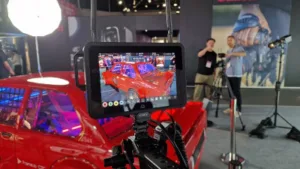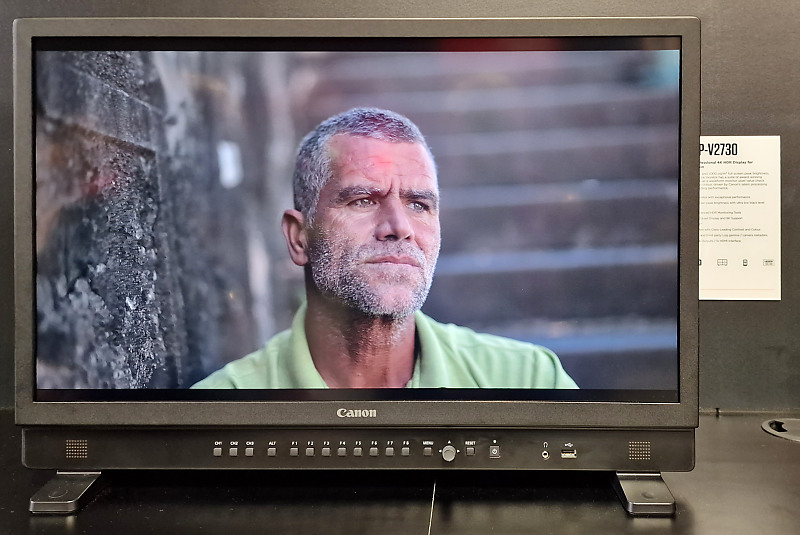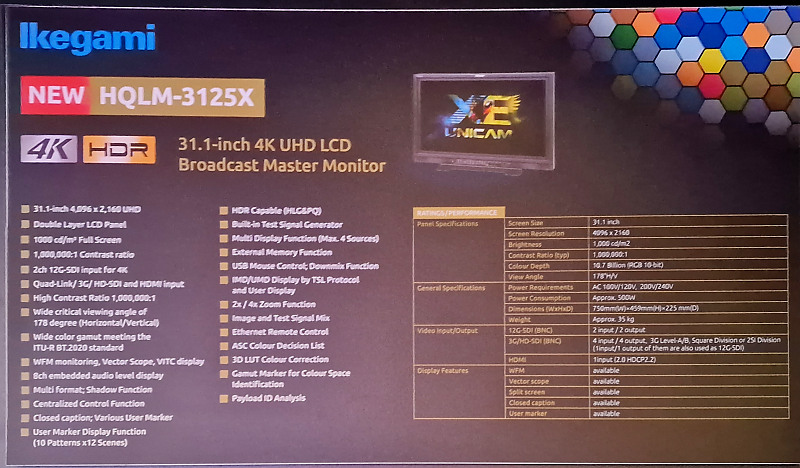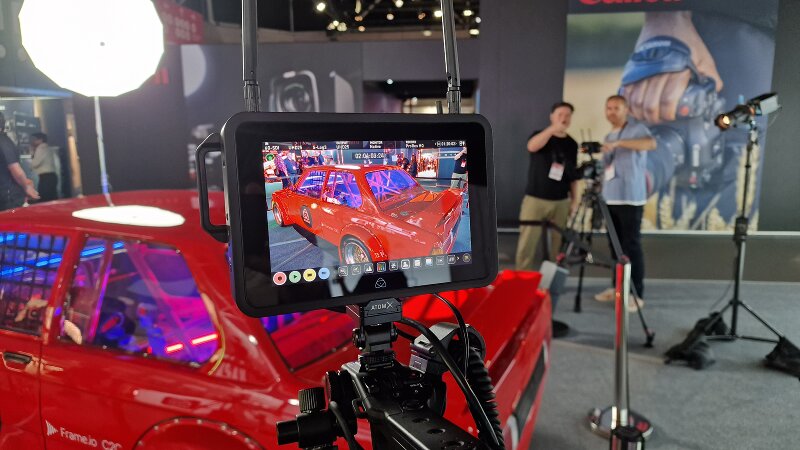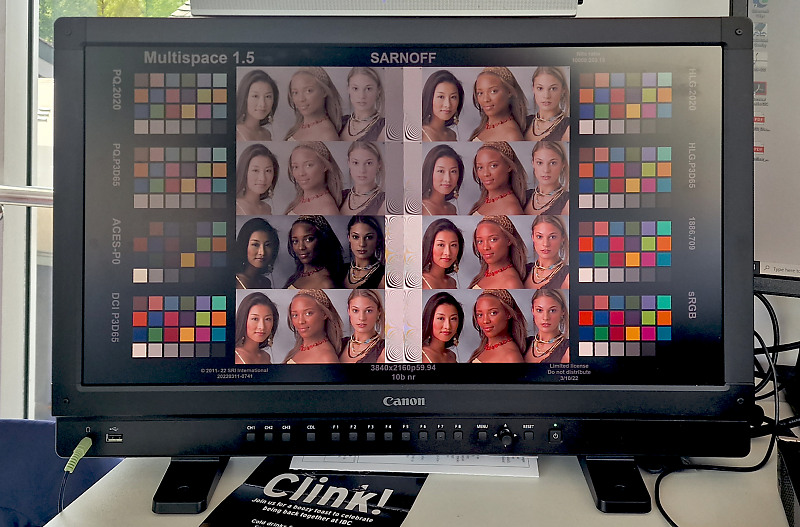Last week I got to my most recent trade show, the IBC or International Broadcasting Convention in Amsterdam, 2022 edition. It starts just a few days after IFA and looks at the other end of the TV experience, the content and delivery. It always amused me that relatively few of the press that attends one event also goes to the other.
I was most interested in talking to some makers of reference and broadcast monitors. As a monitor veteran, I like to see what the makers are doing, but this year was something of a let down. A number of significant vendors were not there at all (Panasonic, Sanyo, Kontron and TVLogic were the names in monitors that jumped out at me). Given Panasonic’s camera business, I was very surprised that they didn’t get along.
Still, I saw a number of other vendors. Sony has a great history in broadcast monitors, but there was no new hardware this year from the firm. There were a number of firmware changes that make the user interface more functional and faster, but the hardware stays the same. The top of the range model uses a dual panel LCD from Panasonic which announced several years ago that it was giving up the business of panel making. As far as I can tell, nobody has decided to take up the business yet and Sony (and others) told me that ‘we’ve bought plenty of inventory for now’ so there aren’t supply issues at the moment.
(My view on this is that if the new phosphorescent blue materials from Samsung and/or UDC have good enough lifetime for this application, then QD-OLED should become the technology of choice. Even with the fluorescent materials, the quality is very good and all it needs is a bit more brightness which the new materials should provide. I suggested to a couple of vendors that they should talk to SDC and I’m not going to reveal who twitched when I said this?. Whether the tiny and very demanding grade 1 broadcasting monitor market is big enough to justify an interest for SDC is another matter.)
Flanders Scientific (FSI) was one of the high end vendors that was at the show. It was showing a new 22″ FullHD RGB OLED monitor for SDR applications with a 10 bit panel and DCI-P3 gamut coverage. It has 335 cd/m² of output. Although intended for SDR, it has an ‘HDR preview’ mode to give a sense of the likely image.
However the main news that CEO Bram Desmet was keen to impart was of a new autocalibration system in its DM series monitors. The system can perform a very extensive full colour volume autocalibration of the monitor without a PC. The test creates a 3D LUT that is then used in the set. He told us that in testing, the system took seven minutes to do the process, and that after checking over 4000 different colour/luminance points, it found all of them to be within an error of DE <1.
Eizo was at the show with its dual panel monitor and on the topic of panels also said that it had inventory. Eizo, I believe, has patents on some of the technology that Panasonic used to make the dual panels and it will be interesting to see if the firm decides to work with another supplier.
There were two new monitors on the Eizo booth, with a shared 27″ chassis and with one unit with QuadHD (CG2700X) resolution and the other with UltraHD (CG2700S). The units are ‘greener’ and use less plastic than previous models, with some of the rear panelling replaced by perforated metal. The ‘hood’ also uses less plastic than previous versions. Intriguingly, the IPS panels have around 1400:1 contrast ratio – which would put it in the realm of a supplier such as AUO rather than Panasonic. (although this is just my speculation).
Canon had an intriguing new monitor, the DP-V2730 which is expected to be available in early 2023 at around €16,000. Unlike others it uses an UltraHD single LCD and I wondered if it used a miniLED type backlight as the contrast was extremely good. However, there were no signs of haloing around the bright highlights. (but then, neither does Apple on its iPad Pro – Everybody Knows MiniLED has Bigger Halos than OLED, Don’t They?) Staff couldn’t tell us any more about the technology used in the display. Peak output is 1,000 cd/m² and an unusual feature is that there are four 12G SDI inputs and outputs. Buyers can opt to enable a feature that allows the display to be use as a multiviewer with all four inputs displayed simultaneously.
The Canon DP-V1830 is an 18″ UltraHD monitor that is available now and is intended to be used as a field monitor so it has an anti-glare treatment on the display. 1,000,000:1 contrast is claimed with peak luminance of 1000 cd/m². Features include support for ACES 1.0 and Arri’s Log-C and Log C HDR EOTFs. Dual and quad views are available as there are four 12G SDI inputs and there is an integrated SDI switcher that can be enabled for an extra charge.
Ikegami also had its latest HQLM3125X which is a dual panel grade one 31.1″ 4096 x 2160 monitor based on the Panasonic dual panel and with peak brightness of 1,000 cd/m² and 1,000,000:1 contrast. Interestingly, the specification shown at the event showed “Wide colour gamut meeting the ITU-R BT.2020 standard”. I’d be very surprised if this was 100%, but staff on the booth didn’t have details. It costs around €34,000. It also had a new Class 2 monitor the HQDM3120 which has a peak output of 350 cd/m². There was also a 17″ 4K monitor and two new monitors in the HLM series with FullHD resolution.
Both HP and Dell were at the show, but didn’t have anything new to show. Frustratingly, staff from HP Grenoble (the display management centre for Europe) told me that the first unit of their new monitor using the IPS Black panel from LG was due to arrive in France just at the end of the show.
Atamos previously showed its new 7″ FullHD IPS LCD field monitor/recorder at NAB, but it was the first time I had seen it. The unit produces 2,000 cd/m² and is calibrated for P3 use. Of course, it does lots of other things besides monitoring including recording, and is produced as standard with a glossy display (an optional anti-glare filter is available). The unit costs $1,299.
Not precisely a monitor topic, but Sarnoff was at the show to demonstrate its range of test patterns and programmes. I was impressed by the way that the patterns could be used to easily distinguish what could otherwise be difficult technical problems – for example by highlighting if one of the four channels of SDI is not working correctly (and identifying which). It also had an interesting image with different colour swatches that can identify any problems with the colour space being used in a signal and help to identify what colour space the video is being presented in. (BR)
We’ll be reporting more on virtual production LED systems and on other topics at IBC in the next few days. (BR)

